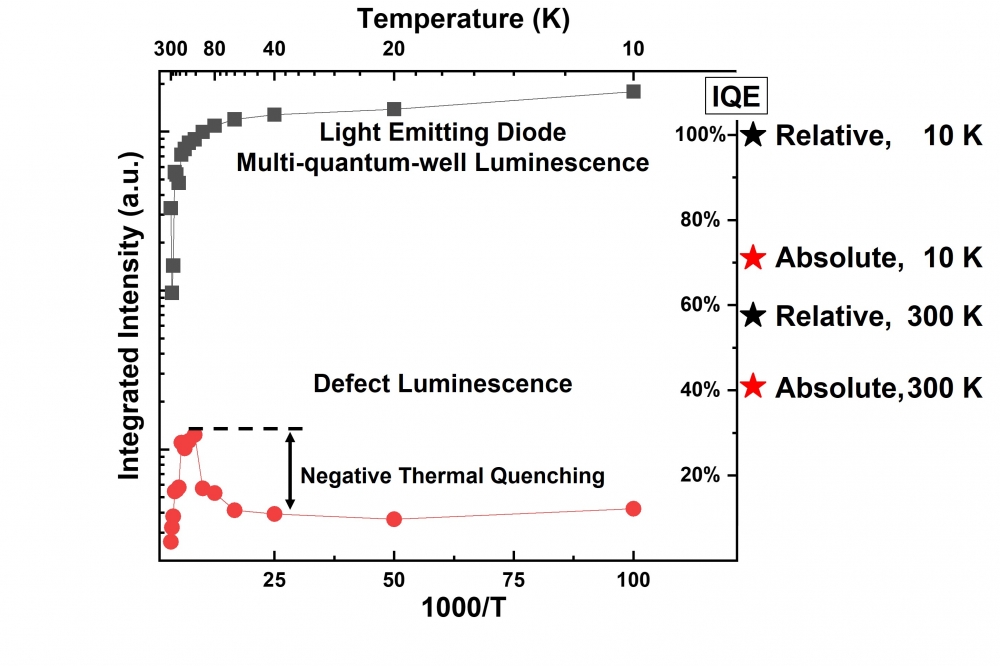US scientists re-visit LED efficiency

New study shows that internal quantum efficiency of LEDs at low temperatures can be as low as 27.5 percent
Efficiency is the key to our sustainability. For instance, the transition to solid-state lighting (SSL) reduced lighting-related energy needs and greenhouse gas emissions by approximately 25 percent, compared to non-SSL. However, the average household energy consumption for lighting is to triple over the next fifty years due to population growth and an increase in housing size.
Accelerating the transition to energy efficient lighting is a significant initiative to improve the global economy and climate conditions. Reaching the US DOE SSL 2035 goals requires not only innovative advancements but also questioning existing assumptions that might blindside them otherwise.
Internal quantum efficiency (defined as the ratio of the generated photons to the injected electrons in the active region) is an important metric to quantify LED performance. IQE not only sets the upper efficiency limit but also helps extracting secondary metrics such as light extraction efficiency (LEE) and injection efficiency (IE).
The most widely used method to quantify IQE of an emitter is via temperature dependent photoluminescence. This method assumes that the radiative recombination is 100 percent at low temperatures (i.e. 4K or 10K). Now, Can Bayram and colleagues at University of Illinois at Urbana-Champaign, have called into question this assumption in a new paper in Appl. Phys. Lett. 122, 091101 (2023).
In the paper, they report a method to reveal low temperature absolute internal quantum efficiency of an InGaN-based LED, with surprising results.
Through a channel-based recombination model, the researchers quantify the negative thermal quenching of defect luminescence bands to determine the low temperature internal quantum efficiency on an absolute scale. They report absolute internal quantum efficiency of generic blue LEDs on traditional sapphire and emerging Si (111) to be as low as 27.5 percent and 71.1 percent respectively – far from assumed 100 percent. (The graph above shows the absolute internal quantum efficiency of a generic blue LED on emerging Si(111) ).
Given today’s interest in high efficiency III-Nitride based LEDs for next-generation solid state lighting, micro-LED AR/VR, and integrated photonics, Bayram and colleagues say that erroneous measurements of the efficiency of an LED diode wafer can lead to mischaracterising the impact of material quality (e.g. defects density) and stack design (e.g. quantum well and layer thicknesses) as well as inaccurate understanding of light extraction and injection efficiencies.
Reference
'Low Temperature Absolute Internal Quantum Efficiency of InGaN-based Light-Emitting Diodes' by YC Chiu and C. Bayram; Appl. Phys. Lett. 122, 091101 (2023). https://doi.org/10.1063/5.0142701

































